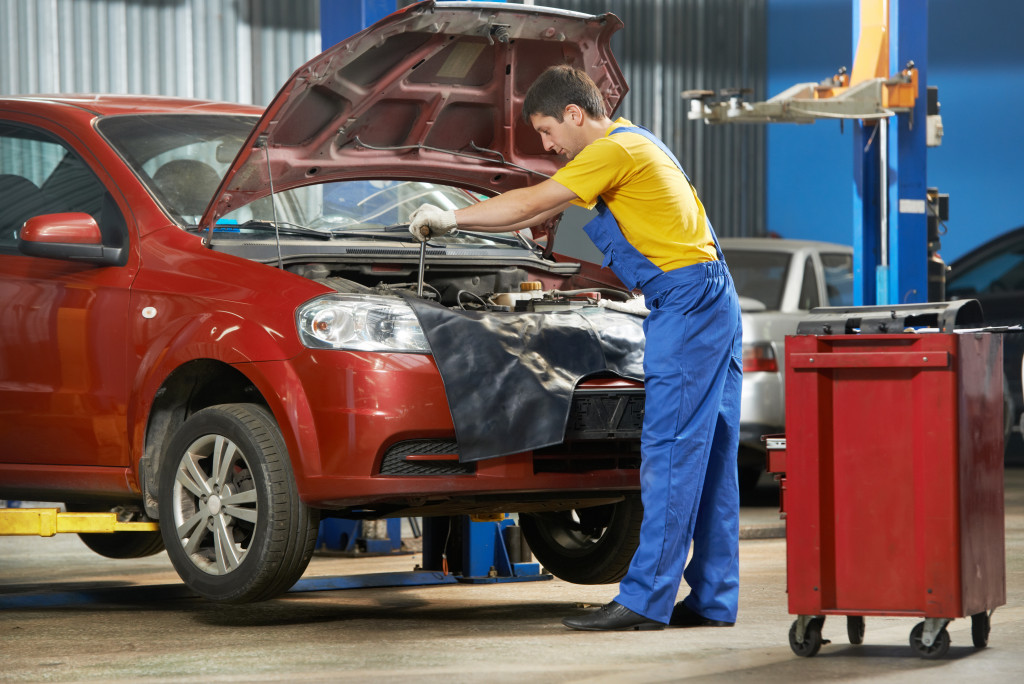Managing fleet vehicles is a critical investment for businesses that rely on company vehicles. Fleet vehicles serve as the main engine of the business to keep things going. Without them, employees would struggle to make business trips, and customer transactions would get delayed.
Being proactive in car maintenance is the key to managing fleet vehicles more effectively. Keeping the drivers safe while on the road is important for any business that seeks to improve its services and overall goals. This won’t be possible if the fleet is in bad shape and not well-maintained. If left ignored, vehicle issues could lead to expensive repair costs and unexpected delays in regular business operations.
Today, companies are doing their best to ensure preventive maintenance of their fleet vehicles. They work with reputable auto repair centers to diagnose vehicle problems quickly and accurately. Meanwhile, others are investing in cutting-edge auto repair tools to make car repairs easier. These include wheel-balancing tools, tire changers, frame machines, and other advanced repair equipment.
Given the importance of vehicle maintenance, companies with fleet vehicles should be aware of fleet maintenance strategies to ensure effective management. With that in mind, we’ll talk about proper fleet maintenance to keep vehicles fully operational and in good working order.
Hire skilled technicians

Besides investing in advanced vehicle technologies, managing a large vehicle fleet requires skilled technicians. These professionals have the right set of skills and expertise to tackle a variety of vehicle concerns. It’s also a huge plus if they specialize in the type of units and the brand that makes up your fleet.
Your technicians should also be aware of the right techniques to minimize fuel usage and carbon emissions. You’re not only reducing the environmental impact of your company, but you’re also saving a lot of money on fuel consumption.
A fleet operator should consider investing in ongoing training, so technicians will stay updated on conducting maintenance tasks efficiently and effectively. Vehicle companies and equipment suppliers offer training programs that cover various vehicle procedures related to new car technologies and preventative maintenance. Training staff helps maintain the smooth operation of the fleet, which leads to minimal losses and reduced unexpected issues. Besides a fully functional fleet, providing training programs results in employee retention, quality service, and a skilled workforce.
Maintain a reliable fleet
Maintaining a reliable fleet can make a big difference in your business. These include higher revenue, increased productivity, reduced downtime, and fewer chances of repairs, towing, and damaged equipment.
Performing regular fleet maintenance is a great way to minimize or eliminate mechanical issues. For instance, proactive maintenance reduces the likelihood of tough vehicle work. For this reason, fleet operators should ensure fleet maintenance should be an integral part of everyday operations.
At the same time, establish a basic maintenance schedule to keep track of the incurred costs. A reliable fleet management program and a handy owner’s manual will keep you oriented about the vehicle’s features and warning signs of potential vehicle faults.
It would be better if all vehicles were in similar models and came from the same maker because it minimizes requirements and accelerates repair. Although it’s hard to get the same model and brand for fleets, it’s always worth the try when dealing with car sales staff. Also, check if the company can provide the same set of vehicles released from the same year.
Record maintenance work
Always keep accurate records of the type of maintenance done on each fleet vehicle, including the date it was performed. Records should consist of all the previous maintenance work, such as tire changing and oil change.
Avoid changing the vehicle assignments for drivers. Allowing different drivers to use the same vehicle can lead to frequent wear and tear since they’re not familiar with handling the unique needs and demands of the vehicle, regardless of whether it’s from the same model, year, or brand. As much as possible, make sure to always assign the same driver for each vehicle.
Also, make sure drivers inspect the vehicles before and after use. The drivers and the fleet operator should have access to a maintenance checklist that includes engine, brakes, tire pressure, transmission, and windshield glass. Use the checklist during routine checkups, maintenance, and repairs.
Fleet maintenance is significantly vital to achieving the company’s bottom line and ensuring employees’ safety. Conducting regular maintenance can mean the difference between profitability and losing money because of accidents or unexpected issues. In this case, knowing the specific needs of your vehicle fleet can make a big impact on the success of your company’s operation.



